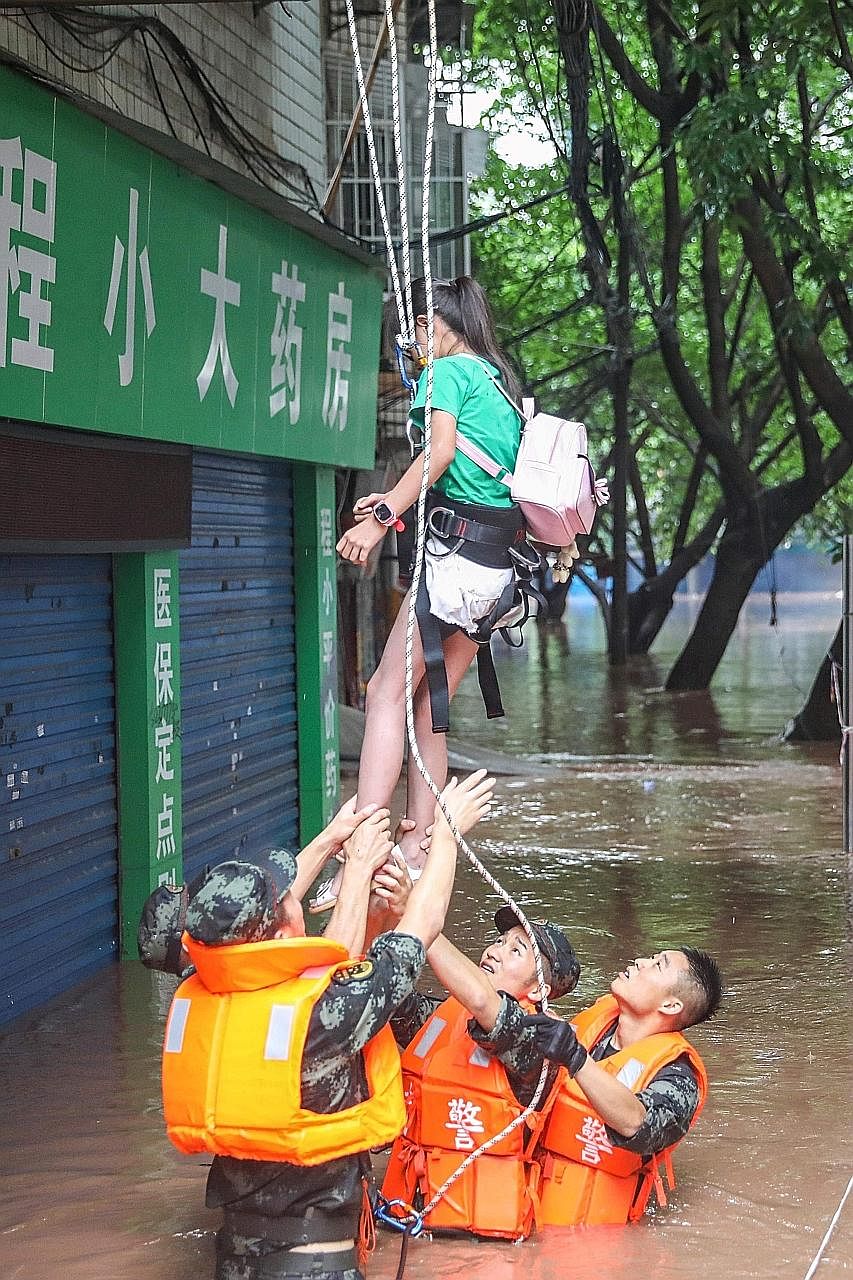Floods in China hit global supply chains
Exporters face disruptions in getting out key items, including personal protective gear
Sign up now: Get ST's newsletters delivered to your inbox
Follow topic:
JIUJIANG/WUHAN • Large parts of China were reeling yesterday from the worst floods in decades, as disruptions mounted for supply chains, including for personal protective equipment (PPE) vital in the fight against the coronavirus.
The central city of Wuhan and the provinces of Anhui, Jiangxi and Zhejiang declared red alerts as heavy rains swelled rivers and lakes.
Wuhan, on the banks of the Yangtze river where the coronavirus emerged late last year, warned residents to take precautions as water levels fast approached their maximum guaranteed safety level.
The summer rainy season brings floods to China almost every year but the impact of the disruption they cause is being felt farther afield as Chinese goods become more important in global supply chains for various items, including PPE.
"It's just creating another major roadblock here in terms of PPE getting into the United States - it is the worst of times for it to happen, but that's what we're dealing with right now," said Mr Michael Einhorn, president of Dealmed, a US medical supply distributor, which sources disposable lab coats and other products from Wuhan and nearby regions.
"We cannot get products out for over a week, which is a very long time in our business," he said, adding that the delays could last up to three weeks.
Xiantao, just west of Wuhan, is China's biggest manufacturer of non-woven fabrics used in PPE production. A third of China's total exports of non-woven fabric products come from the city.
At least 141 people have either died or gone missing as heavy rains which started last month forced nearly 15 million people to be evacuated from their homes this month alone, and caused billions of dollars in economic losses, according to the government.
An AFP photographer travelled through central Jiangxi, floating past partly submerged villages and towns as rescue workers battled to repair levees and dykes, and forecasters warned of yet more rain.
The giant Three Gorges reservoir, which has been holding back more water to try to ease downstream flood risks, is more than 10m higher than its warning level, with inflows now at more than 50,000 cubic metres a second.
Waters in more than 400 rivers have exceeded warning levels, while some reached historic highs over a period that officials say has caused the highest average rainfall levels across the Yangtze basin since 1961.

Paramilitary police officers helping to evacuate a resident from her house in a flooded area in China's south-western Chongqing city. PHOTO: AGENCE FRANCE-PRESSE
The authorities are particularly concerned about Poyang Lake - China's largest freshwater lake - in hard-hit Jiangxi province.
The lake - formed from the overspill of the Yangtze - is 2.5m higher than its warning level.
-
141
Number of people who have either died or gone missing as a result of the heavy rains which started last month.
15m
Number of people who have had to be evacuated from their homes this month alone.
It has expanded by more than 2,000 sq km during this flood season, and parts of the surrounding town have been inundated.
Further east, Lake Tai near Shanghai has also declared a red alert after its water level rose to nearly a metre higher than its safe level.
Summer rains and seasonal glacial melt in the river's Tibetan plateau headwaters cause routine annual flooding.
But critics said the summer flooding threat has worsened over the decades due in part to rampant overdevelopment and poor water conservancy policies such as overbuilding of ill-advised dams and levees.
The Yangtze river basin is forecast to see a new round of heavy rainfall in the coming days, according to experts from the Yangtze Water Resources Commission of the Ministry of Water Resources.
The government had also issued a warning for the Huaihe river, another major Chinese waterway to the north of the Yangtze, as its waters continue to rise.
REUTERS, AGENCE FRANCE-PRESSE, XINHUA

